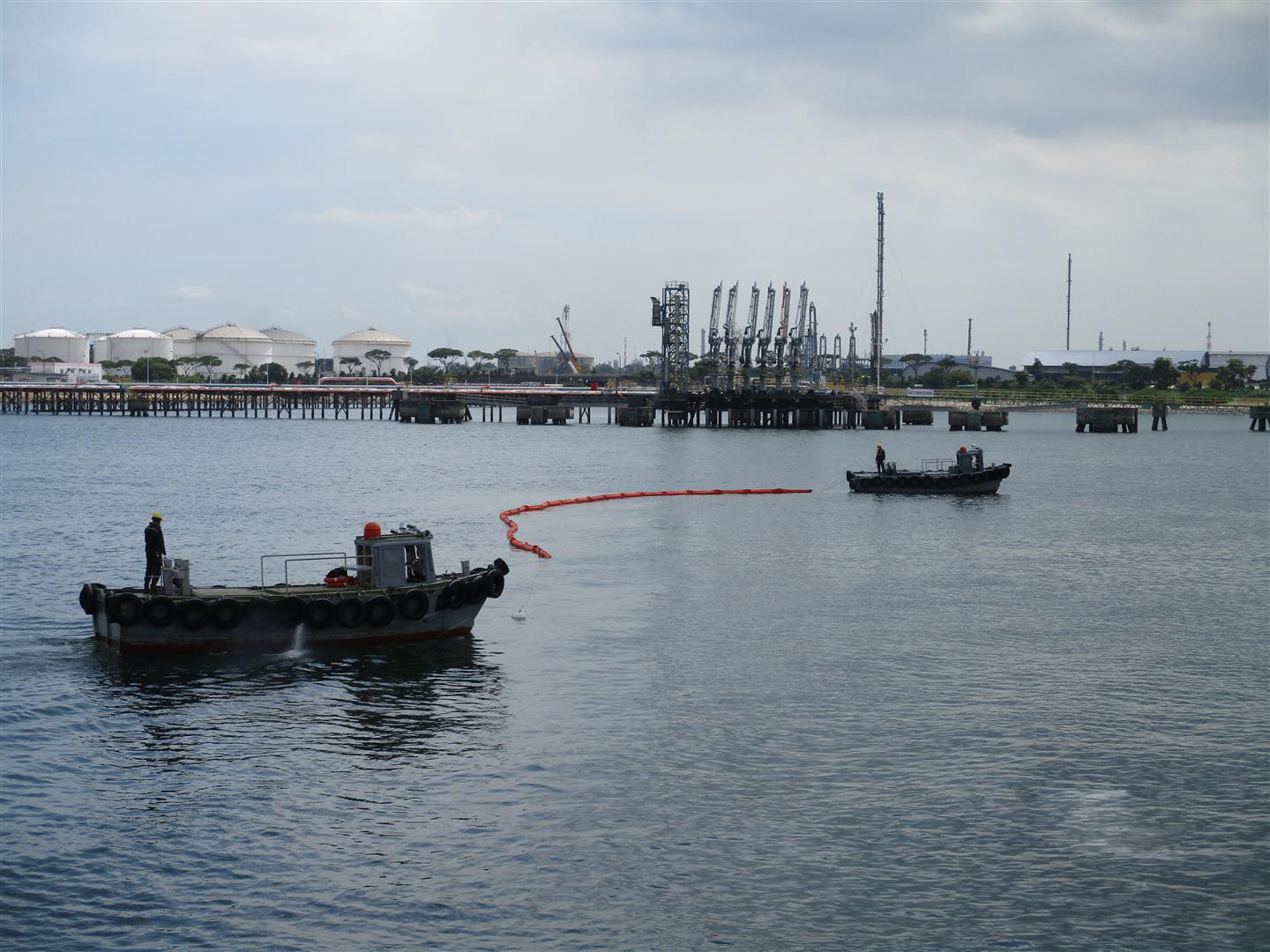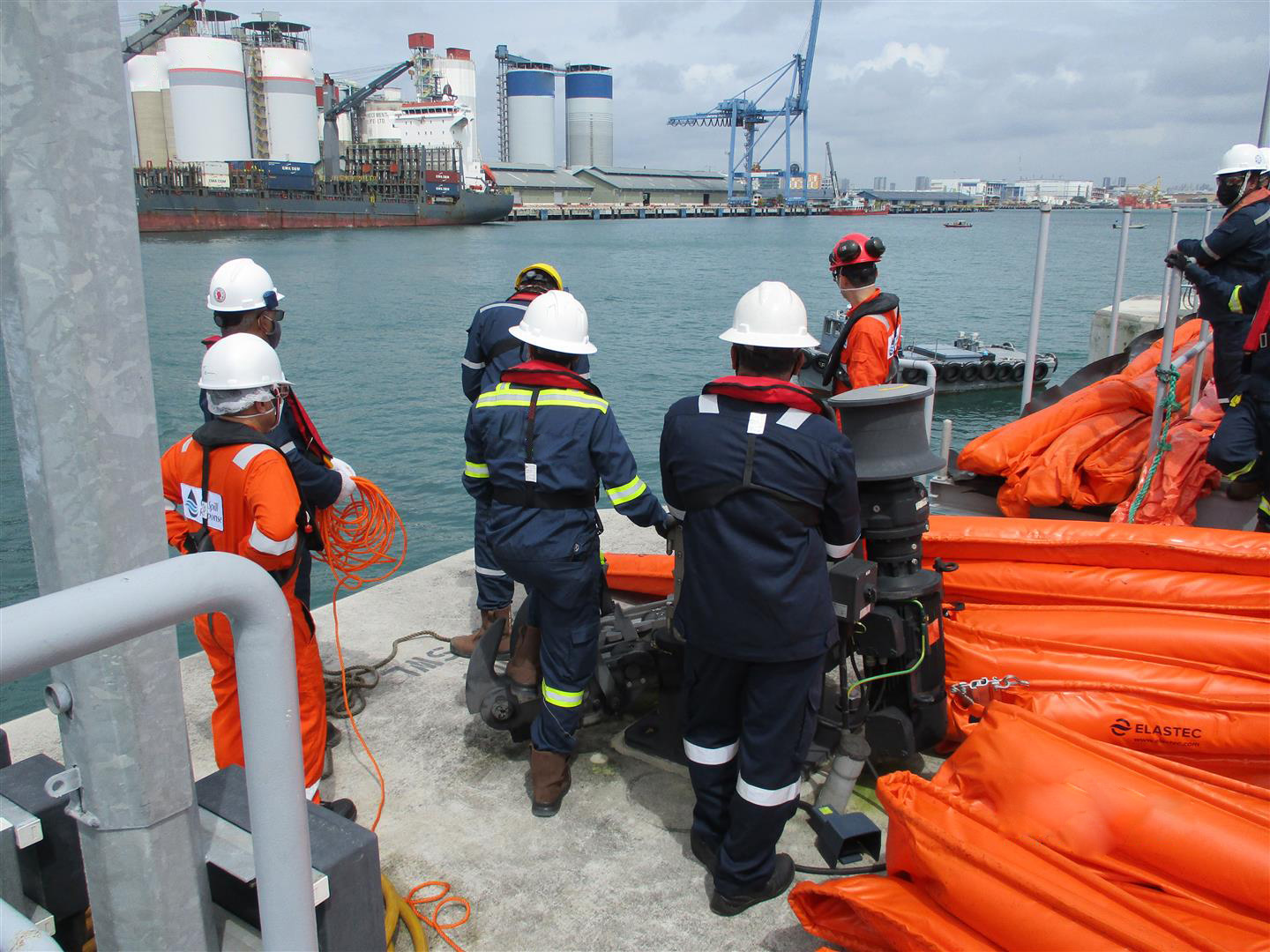
Whilst adhering to Covid safety measures, we have completed our first face-to-face customised training in Singapore since the circuit breaker in April 2020. This attests to our dedication to both preparedness and response solutions, whether in an emergency or peacetime.
In this article, we hear from our Trainers, Yow Lih Hern and Norman Ramos on their experience.
Q: What were your first thoughts during the face to face training?
Lih Hern (YLH): Excitement came in quickly at first before worries took over. It has been too long since we met any client or member in person and coincidentally, my previous face to face training was conducted in January 2020, exactly 12 months ago. The worries mainly revolved around personal health and safety, and of course, delivering training physically in front of a crowd after a long hiatus.
Norman (NLR): I felt awkward. I am used to seeing my participants online so seeing them in front of me is surreal. In remote delivery, you only have to be aware of your facial expressions to convey the message across but in face to face training I have to be aware of my body language once again. Also since I am wearing a mask now, facial expressions do not matter as much compared to body language during face to face training.
Lots of questions came to my mind. Am I doing this right? Do my participants sense my uneasiness? How am I doing with my body language? After the first session, I became more comfortable and was able to adjust to the realities of face to face delivery.
Q: Did you make any additional preparations for this face to face training?
NLR: Additional preparations were mainly ensuring COVID-19 precautions were taken into consideration. Planning on deployment was extensive due to the location and number of personnel involved.
YLH: A lot of thoughts and effort were put into the method statement and risk assessment for the training. We had to run through the whole training process a few times to capture processes involving higher exposure to the virus and how to mitigate it. A prudent decision had to be made to find the right balance between comfortability and the degree of exposure.
Q: How did you find the deployment, more or less the same as deployment pre-COVID-19?
YLH: In general the deployment was more physically demanding as we were wearing N-95 masks on top of the normal PPE. We anticipated challenges in giving instructions in an outdoor environment and bought a new and more powerful voice amplifier. However, it cannot be brought to the jetty due to safety requirements. Due to the pandemic, I have reduced my frequency of exercise and I felt the impact of it. After one of the sessions, Norman was telling me “I can hear you catching your breath”. Definitely, the next priority on my list will be to resume my exercise regime!
NLR: Due to the COVID-19 precautions such as the use of masks and social distancing, I thought the deployment was more physically draining and mentally demanding. The area where we deploy is at a jetty which is rather tight on space and limiting, however, such cases are not uncommon in an actual response. For me, it would be more important to ensure a robust pre-screening process for responders as COVID-19 precautions would be challenging to comply with most of the time in an actual response.
Q: How did you feel about the face to face training as a whole?
NLR: I felt that the whole process of face to face training was familiar and yet different. I have to come to grips with the reality that my participants are not on screen but in front and interacting with me. I thought it was more challenging especially in the first session. I am pleased that the participants enjoyed the training and the various adjustments I made to help them engage in the training!
YLH: Fortunately, I didn’t have to adjust too much as I have not done many remote deliveries over the past few months. The main difference for me was the use of a face mask which meant I had to strain my voice in order for the delegates to hear me. I actually had a sore throat at the end of the training sessions! The other learning curve was to bring at least two extra face masks. You never know how smelly the mask can become after talking for a few hours.
Q: Any further thoughts to share?
YLH: It feels really great having the opportunity to conduct one of the first physical training courses since the circuit breaker in March last year. The interaction with delegates and providing on-site solutions to better prepare for deployment were all part of the satisfaction of training. Lastly, many thanks to Norman who helped in providing guidance throughout the training course!
NLR: Always have fun when doing the delivery, it will reflect in the way you conduct the training. More importantly, keep yourself physically and mentally fit and healthy. It’s really challenging to talk the whole day and deploy equipment under the tropical sun with an N95 mask on. I feel that it takes a lot more energy now, conducting face to face training due to the additional precautions needed to prevent the spread of COVID-19.




